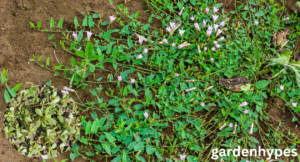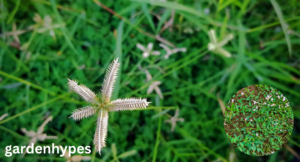Creeping Lawn Weeds How Identify Prevent and Eliminate Them
Creeping lawn weeds are the bane of many gardeners and homeowners. These aggressive invaders can quickly take over your lawn, competing with grass for nutrients, sunlight, and water. If left unchecked, they can turn a lush green lawn into an unsightly mess. But fear not! With the right knowledge and strategies, you can keep these pesky plants at bay.
What Are Creeping Lawn Weeds?
Creeping lawn weeds are plants that spread horizontally through stolons (above-ground runners) or rhizomes (underground stems). Their growth habit allows them to cover large areas quickly, making them particularly challenging to control. Common examples include:
- Creeping Charlie (Ground Ivy): A low-growing perennial with scalloped leaves and small purple flowers. It thrives in shady, moist areas.
- Clover: A familiar sight in many lawns, clover has small, trifoliate leaves and white or pink flowers. While some consider it beneficial, it can outcompete grass.
- Crabgrass: This annual weed spreads through seed and forms mats of grass-like foliage that choke out turfgrass.
- Dandelions: Recognizable by their bright yellow flowers and fluffy seed heads, dandelions spread both through seeds and deep taproots.
click in link mango season
Why Are Creeping Weeds a Problem?
Creeping weeds are problematic because:
- Competition: They compete with grass for essential resources, leading to patchy and weak lawns.
- Spread: Their ability to spread rapidly makes them hard to eradicate once established.
- Aesthetic Issues: They can create uneven textures and colors in your lawn, diminishing its appearance.

How to Prevent Creeping Lawn Weeds
Preventing creeping weeds is easier than battling them after they’ve taken hold. Here are some proactive steps:
- Maintain a Healthy Lawn:
- Mow your grass to the appropriate height (usually 2.5 to 4 inches).
- Water deeply but infrequently to encourage deep root growth.
- Fertilize according to your grass type’s needs to ensure robust growth.
- Aerate Your Soil: Compacted soil makes it easier for weeds to establish. Aeration improves drainage and allows grass roots to grow deeper.
- Overseed Bare Patches: Bare spots in your lawn are prime real estate for weeds. Regularly overseed these areas to keep them filled with grass.
- Improve Drainage: Poor drainage creates conditions that many creeping weeds love. Address drainage issues by leveling low spots or adding organic matter to the soil.
How to Control Creeping Lawn Weeds
If creeping weeds have already taken hold, don’t panic. Here’s how to control them effectively:
- Manual Removal:
- For small infestations, pull weeds by hand. Ensure you remove the entire plant, including roots, to prevent regrowth.
- Use a weeding tool for deep-rooted weeds like dandelions.
- Mow Strategically:
- Set your mower blade higher. Taller grass shades the soil, making it harder for weeds to germinate.
- Apply Herbicides:
- Use selective herbicides designed to target specific weeds without harming your grass.
- Follow label instructions carefully to avoid overapplication or damage to your lawn.
- Organic Alternatives:
- Vinegar-based solutions can be effective on some weeds but may harm grass as well. Use cautiously.
- Corn gluten meal can act as a natural pre-emergent herbicide to prevent weed seeds from germinating.
- Reseed and Repair: After removing weeds, reseed the affected areas to encourage grass regrowth and prevent new weeds from taking over.

Long-Term Lawn Care Tips
Consistent lawn care is your best defense against creeping weeds. Make a habit of:
- Regular Monitoring: Walk your lawn weekly to spot and address weeds early.
- Seasonal Maintenance: Adjust your care routine to align with the growing seasons of your grass type.
- Proper Lawn Edging: Use physical barriers to prevent weeds from encroaching from garden beds or neighboring areas.
Conclusion
Creeping lawn weeds can be a persistent problem, but with vigilance and proper care, you can maintain a beautiful, weed-free lawn. Focus on prevention through healthy lawn practices, and tackle infestations promptly when they arise. Your effort will pay off in the form of a lush, green lawn you can be proud of.
click in link mango season
faqs
1. What are creeping lawn weeds?
Creeping lawn weeds are invasive plants that spread horizontally through stolons (above-ground runners) or rhizomes (underground stems). Examples include Creeping Charlie, clover, and crabgrass.
2. Why are creeping weeds difficult to control?
Their rapid spread through runners and roots allows them to quickly cover large areas, making manual removal and control challenging.
3. How can I prevent creeping weeds from invading my lawn?
Preventive measures include maintaining a healthy lawn, proper mowing, fertilizing, aerating the soil, and addressing bare spots promptly.
4. What are the best ways to remove creeping weeds?
Effective methods include manual removal, applying selective herbicides, using organic solutions like vinegar, and reseeding affected areas to promote grass growth.
5. Can organic methods effectively control creeping weeds?
Yes, organic options like vinegar-based sprays or corn gluten meal as a pre-emergent can help, but they may require consistent application and may affect grass as well.
6. What role does lawn care play in controlling creeping weeds?
Regular lawn maintenance, such as proper watering, mowing, and fertilization, creates a dense grass cover that reduces space for weeds to establish.
